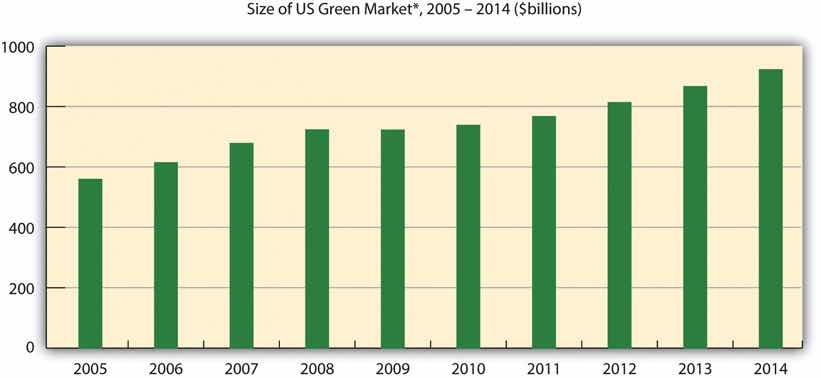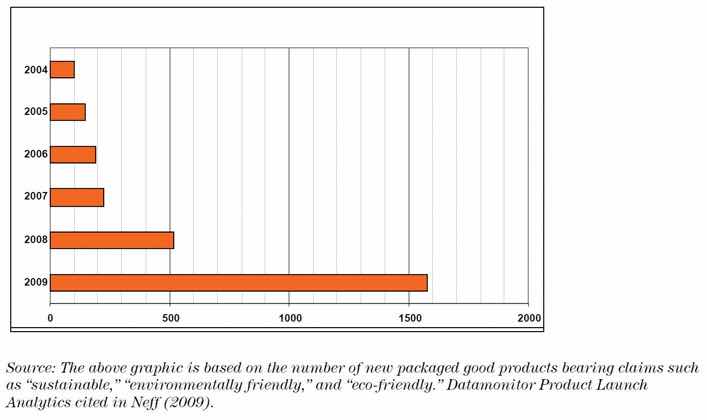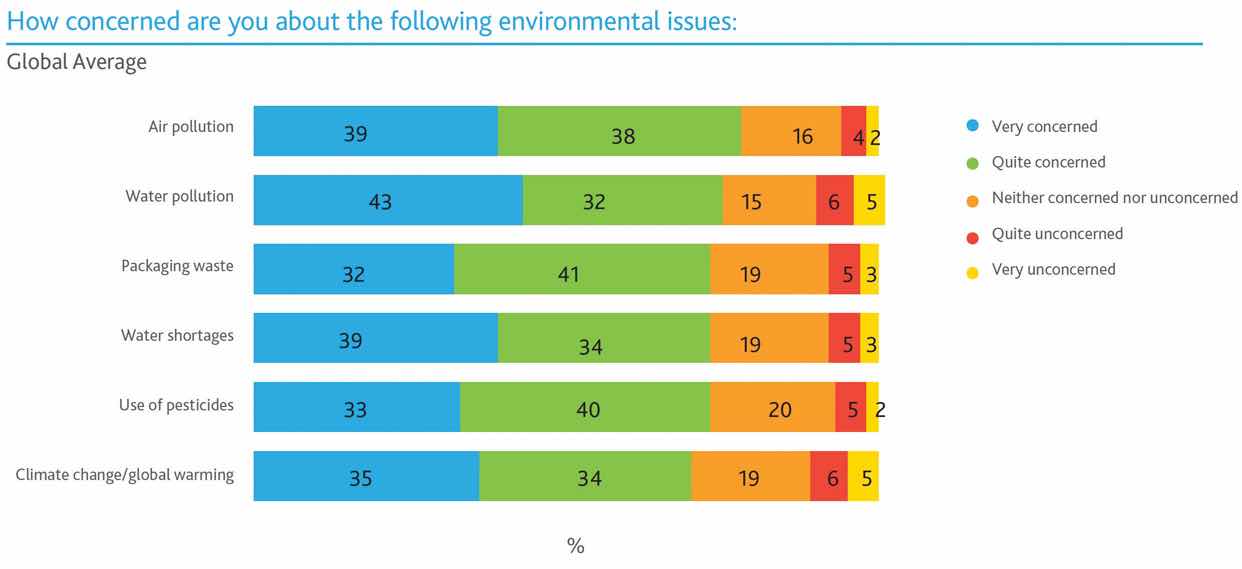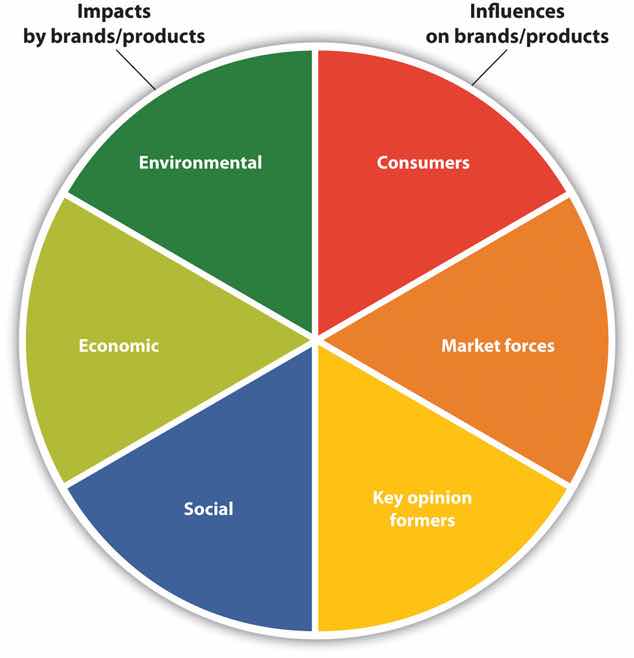This chapter was written by Diane Devine with contributions from Lee Mizusawa and Ross Gittell.
There is significant and increasing interest and demand by both consumersA person or group who purchases products or services for use or consumption and can also be called a customer. and companies in being more sustainable. The sustainability market includes an increasingly wide range of companies, products, and services, all in some way intending to address sustainability concerns.
Why do companies adopt sustainability principles? Sustainable practices are good business practices. Not only does it help the greater good by improving a company’s ecological footprintMeasures how much land and water area a human population requires to produce the resources it consumes and to absorb its carbon dioxide emissions., but it can reduce waste, increase consumer engagement and loyalty, and provide a competitive edge, all contributing to the bottom line. Unlike more traditional companies that focus almost solely on the bottom line alone, sustainable companies focus on the triple bottom line, which includes (1) people, (2) planet, and (3) profits.
Sustainable marketingInvolves developing and promoting products and services that meet consumer and business user needs utilizing society’s natural, human, and cultural resources responsibly to ensure a better quality of life now and for future generations to come. involves developing and promoting products and services that meet consumer and business user needs utilizing society’s natural, human, and cultural resources responsibly to ensure a better quality of life now and for future generations to come. The focus of this chapter is to help students better understand what is meant by sustainable marketing and how it differs from traditional marketing.
Sustainable marketing is not just about taking steps to appear more environmentally friendly or more socially conscious and advertising that fact to consumers. It is more substantive and meaningful. Sustainable marketing draws on traditional marketing methods and in addition requires the following:
An increasing number of consumers base their purchases in some way on the environmental and social impact of the product and services they buy and the companies from which they purchase. In an October 2011 study, Cone Communications and Echo Research identified that 81 percent of respondents said that companies had a responsibility to “address key social and environmental issues” and 76 percent of respondents said they had bought a product with “an environmental benefit” in the last twelve months.“2011 Cone/Echo Global CR Report,” Cone Communications, http://www.coneinc.com/2011globalcrreport.
The size of the sustainable market (defined by Mintel, a research company, as “healthy products/healthy planet”) is significant and is expected to grow to $922 billion by 2014.“Consumers Claim They Are Willing to Pay Extra for Green,” eMarketer Green, last modified April 1, 2010, accessed April 1, 2010, http://www.emarketergreen.com/blog/index.php/consumers-pay-extra-green; “Definitions of Healthy Products, Healthy Planet (‘HP2’) Sectors,” Nutrition Business Journal, last modified May 15, 2008, http://newhope360.com/business-directory/definitions-healthy-products-healthy-planet-hp2-sectors. This represents an increasing but still relatively small portion of the US and world economy, with the size of the US economy being approximately $15 trillion and world economy being about $60 trillion in 2010. New sustainable product launches are continuing to grow with consumer demand. In the food and beverage category alone, Mintel Global New Products Database (GNPD) has tracked more than thirteen thousand new sustainable food and drink products since 2005.Mintel, “Sustainable Food and Drink Category,” press release, October 2010, http://www.mintel.com/press-centre/press-releases/614/sustainable-food-and-drink-lovers-attracted-by-perceived-superior-quality.
Figure 6.1

Source: Mintel, Global New Product Database (GNDP), March 2010, http://www.eMarketerGreen.com.
Figure 6.2

Source: Datamonitor Product Launch Analytics cited in http://www.horizons.gc.ca/doclib/2011-0058_eng.pdf.

Source: Nielsen, Global Online Survey, 2011, http://www.nielsen.com/content/dam/corporate/us/en/reports-downloads/2011-Reports/nieslen-sustainability-report.pdf.
Survey of Global Consumers on Environmental Issues of Concern
According to Nielsen’s 2011 Global Online Environment and Sustainability Survey (http://www.nielsen.com/us/en/insights/press-room/2011/global-warming-cools-off-as-top-concern.html) of more than 25,000 Internet respondents in fifty-one countries, three out of four global consumers rated air pollution (77 percent) and water pollution (75 percent) as top concerns, both increasing 6 percentage points compared to 2009. The areas where concern is mounting fastest is over the use of pesticides, packaging waste, and water shortages, with reported concern increasing 16, 14, and 13 percentage points, respectively. Top environmental concerns among Asia Pacific consumers include water shortages and air pollution. Water pollution was the main concern for Latin Americans, Middle Easterners, Africans, Europeans, and North Americans.
The following are key drivers of sustainable marketing:
Figure 6.3

One Company’s Approach to Sustainability: P&G
More and more companies are realizing the importance of incorporating sustainability principles into their business model. Keys to success are (1) complete integration and adoption of sustainability into the company’s vision and business strategy; (2) clear transparency and honest communication to the consumers, stakeholders, and community at large; and (3) measureable progress against well-defined sustainability goals.
In 2010 one of the largest consumer packaged goods company in the world, Procter & Gamble (P&G), announced a new long-term sustainability vision. P&G’s “Purpose-inspired Growth Strategy” is about “improving the lives of more consumers, in more parts of the world, more completely.”
As P&G describes it,“Environmental Sustainability,” Procter & Gamble, http://www.pg.com/en_US/sustainability/environmental_sustainability/index.shtml.
We developed this vision over the course of a year, partnering with external experts and soliciting input from hundreds of P&G employees at all levels and functions.
Our complete visionary end-points are outlined below. These end-points are long-term in nature because some of them will take decades to come to fruition.
P&G has made a serious commitment to sustainability.